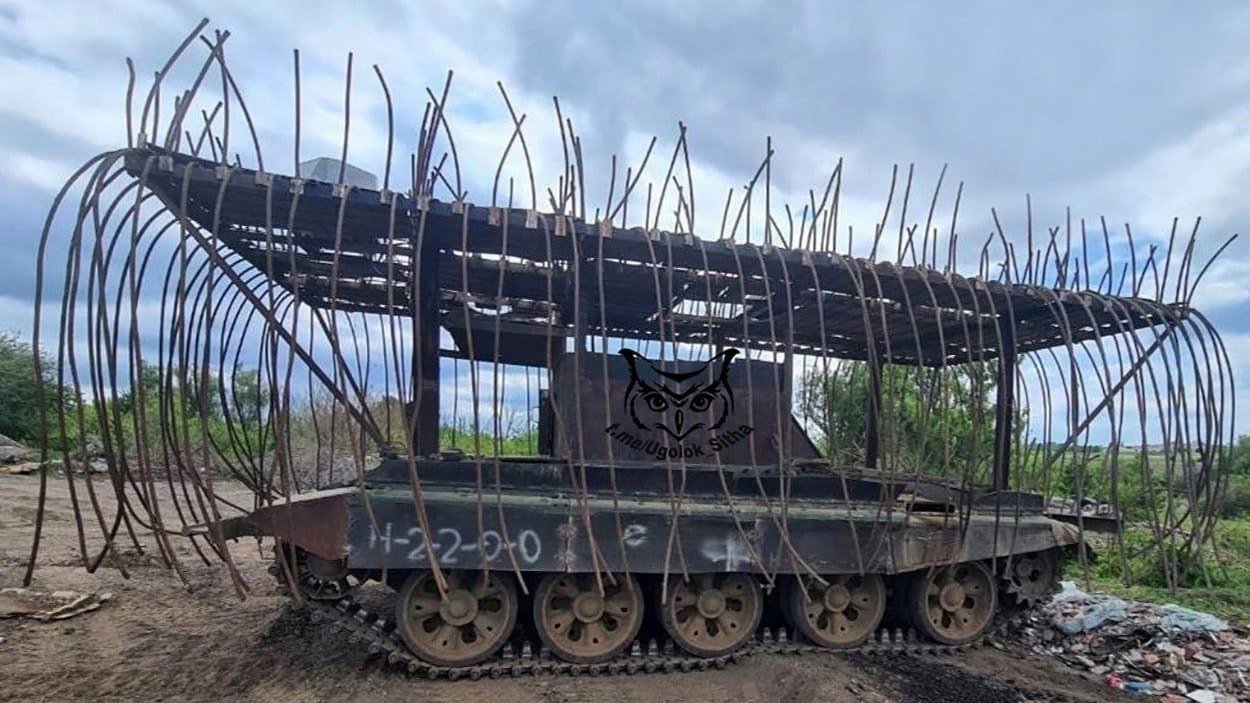Production of the 51-ton, three-person T-90M tanks has more than tripled since 2022, despite tightening foreign sanctions on Russia’s Uralvagonzavod tank plant.
The T-90M is Russia’s best tank. Thickly armored and boasting high-end optics and a powerful 125-millimeter main gun, the T-90M is the closest Russian analogue to America’s best M-1A2 tank and Germany’s best Leopard 2A7.
Despite losing more than 4,000 tanks in Ukraine since widening its war on the country in February 2022, and despite successive rounds of sanctions on Russia’s arms industry, Russia has managed to expand production of the T-90M at Uralvagonzavod.
That’s the conclusion of a new study from the pro-Ukraine Conflict Intelligence Team. “According to our estimates, Uralvagonzavod produced 60 to 70 T-90M tanks in 2022. In 2023, amid efforts to mobilize the defense industry, output may have increased to 140 to 180 tanks, and by 2024, it may have surpassed 200 units annually, possibly approaching a production rate of 250 to 300 tanks per year.”
It’s likely, with the ongoing production boost, that the T-90M is the most produced tank in 2025, on an annual basis. US firm General Dynamics Land Systems has built no more than 90 new M-1A2s annually in recent years. The Ukrainian army operates the survivors of 31 ex-American and 49 ex-Australian M-1s.
Uralvagonzavod expanding output, in defiance of sanctions, allows Russian regiments and brigades to replace any T-90s they lose in action in Ukraine, while also allowing Russian forces to build up a small reserve of T-90s for possible future conflicts. In 40 months of hard fighting, the Russians have written off more than 130 T-90s—not just the latest M-models, but also older T-90As and T-90s.
“Given that over 130 of [the T-90Ms] have been destroyed, an estimated 410 to 500 remain in service,” CIT concluded. They represent approximately 15% of the tanks deployed along the 1,100-km front line in Ukraine, according to CIT. Older T-80s, T-72s, T-62s and T-55s—some recovered from long-term storage after decades of disuse—account for the rest of Russia’s deployed tanks.
But as the wider war grinds into its fourth year, these tanks only rarely participate in direct assaults on Ukrainian lines. “In a battlefield where neither side holds air supremacy and large-scale combined-arms operations remain difficult to execute, combat has shifted to smaller tactical formations—usually at the squad or company level, backed by armored vehicles,” Ukrainian analysis group Frontelligence Insight explained.
“In this environment, traditional platforms like tanks and [infantry fighting vehicles] face growing challenges, especially amid constant artillery fire and the widespread use of cheap, fast drones,” Frontelligence Insight added.
So tanks usually remain in hiding inside structures or in camouflaged earthen dugouts, occasionally breaking cover only long enough to fire a few main gun rounds at targets potentially miles away—and then retreating back into concealment. It’s a new “era of the cautious tank,” according to David Kirichenko, an analyst with the Center for European Policy Analysis in Washington, D.C.

Saving the T-90Ms for later
With infantry taking the lead in more assaults, often riding on motorcycles or other civilian-style vehicles, Russia can preserve its slowly-growing fleet of T-90Ms—and save them for a major future offensive in Ukraine. Or for some other conflict. The Danish Defense Intelligence Service warned that Russia could launch a war in a country bordering Russia six months after the war in Ukraine ends.
Ukraine’s allies could constrain Russia’s T-90Ms by tightening sanctions on Uralvagonzavod. The firm once imported certain crucial tank parts, including optics and circuit boards. These imports are now sanctioned, so Uralvagonzavod increasingly uses Russian-made versions of the same parts.
“It is clear that while Russia continues to grapple with production delays, quality control issues and the challenges of sourcing components under sanctions, it is also making tangible progress in both manufacturing and the deployment of new technologies,” Frontelligence Insight warned.
But these parts are still manufactured on industrial machinery that Russia bought from Chinese or Western firms. The machines don’t last forever—and this is a key Russian weakness. “Existing machinery, now in its third year of nonstop, around-the-clock operation, will also increasingly require replacement,” CIT noted.
To suppress production of new T-90Ms, Ukraine’s allies must prevent Russia from replacing the machinery at Uralvagonzavod. “Enforcing stricter sanctions is key to limiting Russia’s defense potential growth,” CIT asserted.





